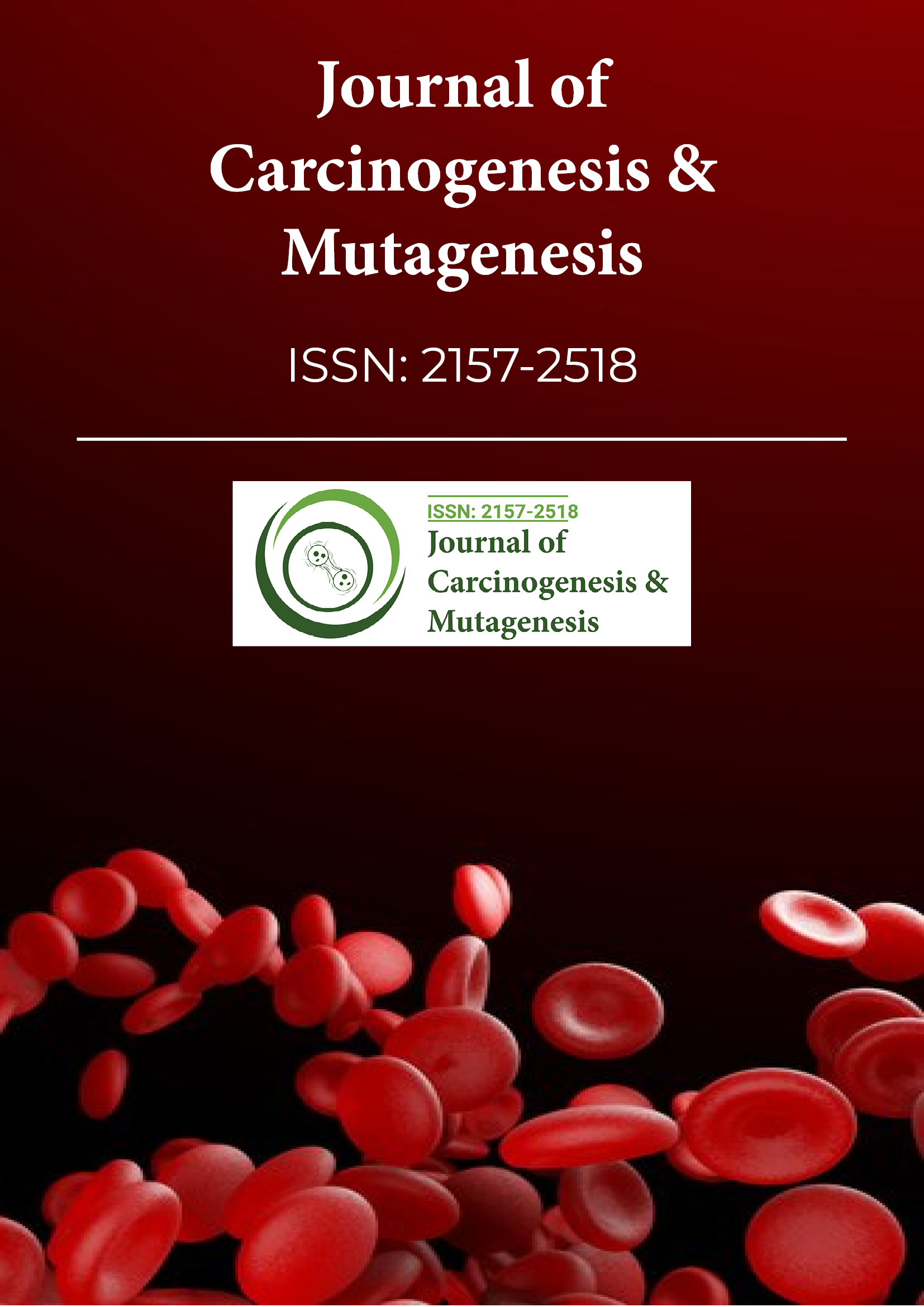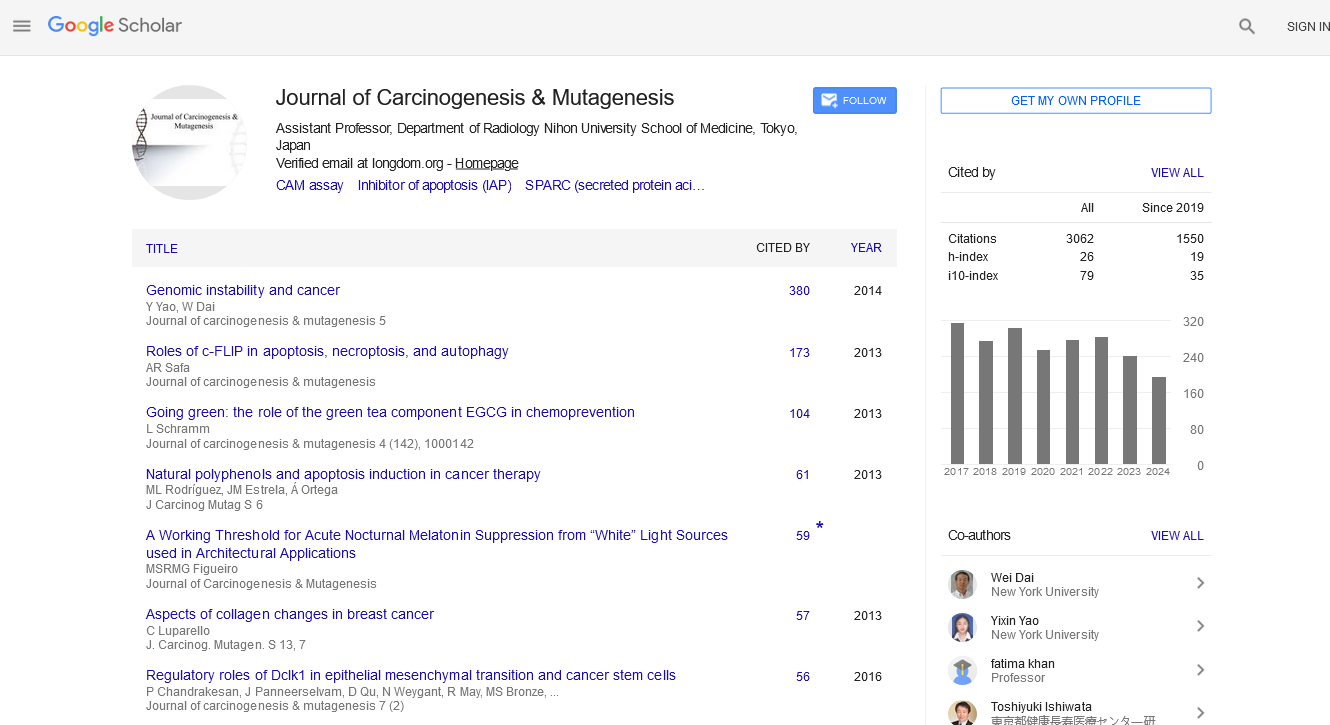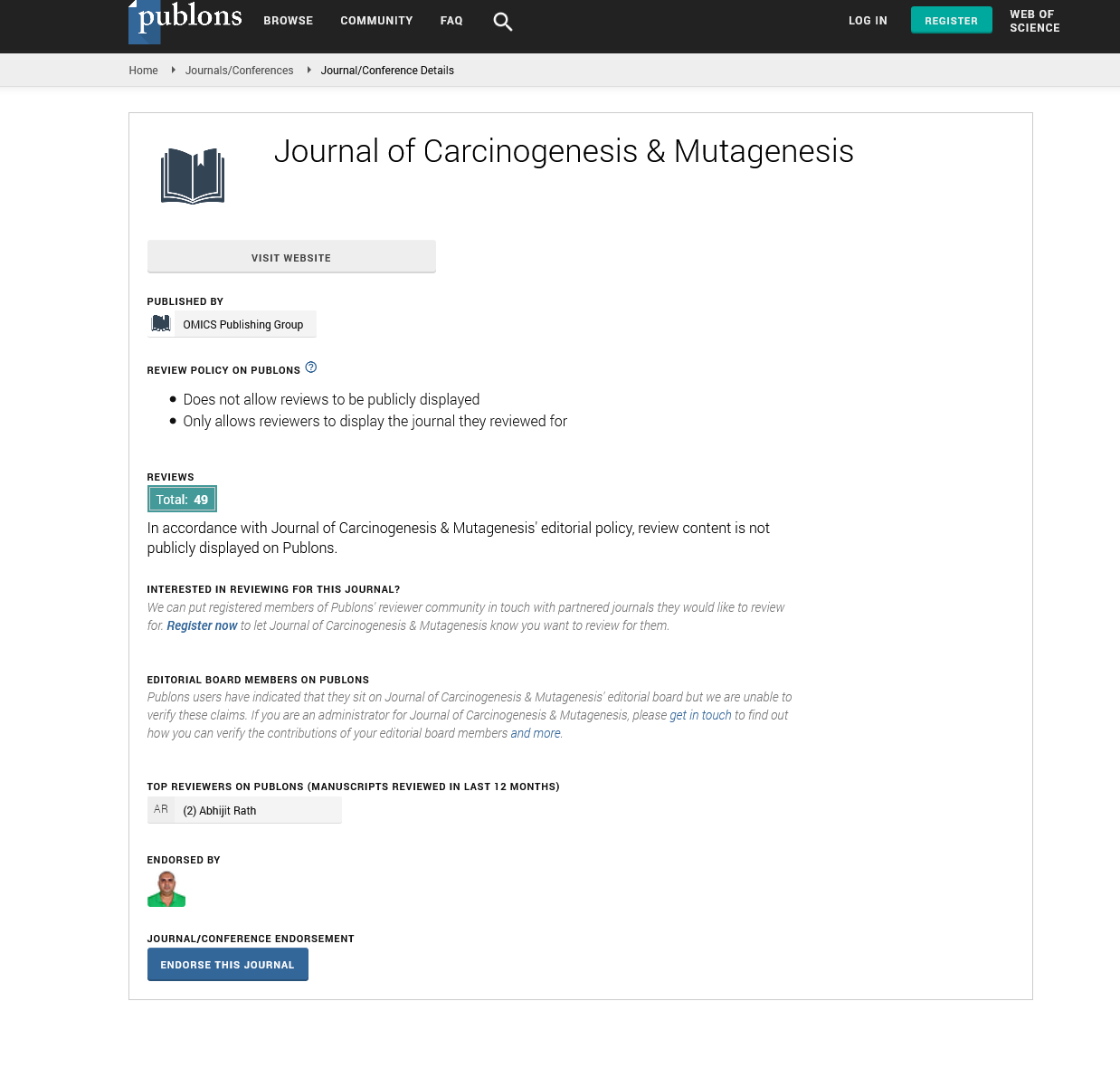Indexed In
- Open J Gate
- Genamics JournalSeek
- JournalTOCs
- Ulrich's Periodicals Directory
- RefSeek
- Hamdard University
- EBSCO A-Z
- OCLC- WorldCat
- Publons
- Geneva Foundation for Medical Education and Research
- Euro Pub
- Google Scholar
Useful Links
Share This Page
Journal Flyer

Open Access Journals
- Agri and Aquaculture
- Biochemistry
- Bioinformatics & Systems Biology
- Business & Management
- Chemistry
- Clinical Sciences
- Engineering
- Food & Nutrition
- General Science
- Genetics & Molecular Biology
- Immunology & Microbiology
- Medical Sciences
- Neuroscience & Psychology
- Nursing & Health Care
- Pharmaceutical Sciences
Abstract
Focal nodular hyperplasia-like lesions after chemotherapy with oxaliplatin or cyclophosphamide in cancer survivors: along with differentiation from liver metastases
Recently the development of Focal Nodular Hyperplasia (FNH)-like lesions after chemotherapy with oxaliplatin or cyclophosphamide in patients with cancers has emerged. Meanwhile, the role of gadoxetic acid (Gd-EOB-DTPA) MRI in the differential diagnosis of chemotherapy-induced FNH-like lesions and liver metastases has been established. In this article, the current knowledge and trends of FNH-like lesions after chemotherapy with oxaliplatin or cyclophosphamide along with the differentiation from liver metastases using Gd-EOB-DTPA MRI in cancer survivors have been reviewed. Cyclophosphamide-based chemotherapy in patients with breast cancer should be regarded as a probable factor for the development of FNH-like lesions due to Sinusoidal Obstruction Syndrome (SOS) involvement. Based on the evidence, compared to oxaliplatin-based chemotherapy group, the shorter interval between the completion of chemotherapy and the development of FNH-like lesion may be suggested in the cyclophosphamide-based chemotherapy group. The characteristic appearance of FNH-like lesion may exhibit a ring hyperintense on Hepatobiliary Phase (HBP) of Gd-EOB DTPA MRI in patients with oxaliplatin-based chemotherapy. FNH-like lesions may also tend to increase the nodules in size and number at late-term follow-up in patients with oxaliplatin-based chemotherapy. Many FNH-like nodules are diagnosed based on highly typical MRI features by Gd-EOB-DTPA MRI and exhibit varying changes during follow-up, therefore, diagnostic confirmation is extremely significant in differentiating from liver metastases in patients with oxaliplatin- or cyclophosphamide-based chemotherapy.
Published Date: 2025-07-25; Received Date: 2025-06-25


